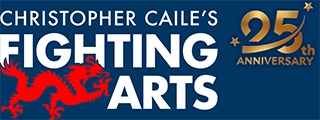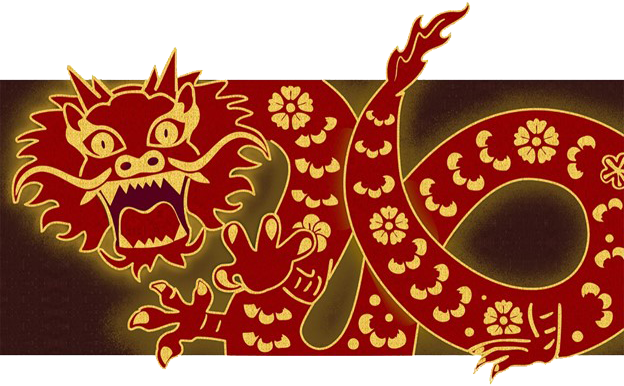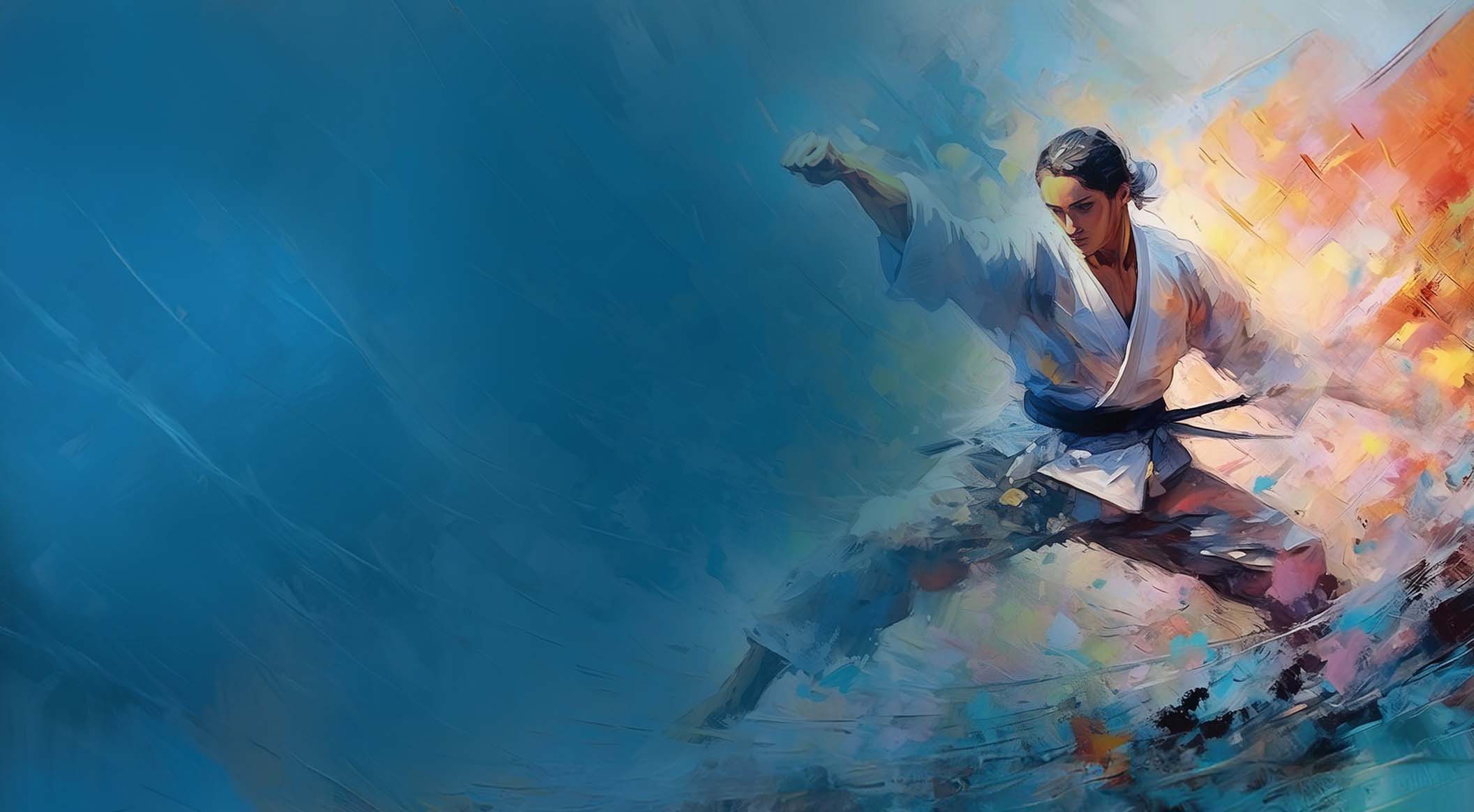Defeating The Headlock
Part 1 – At The Moment Of Initiation
by Christopher Caile
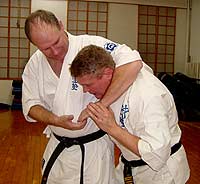
Editor's Note: This is the first of a two part article on how to defend against headlocks. This article focuses on escaping as the attack is initiated. The second article addresses how to escape from headlocks that are already secured, as well as how to deal with someone who is just playing. Some of the techniques shown in these two articles are dangerous. Always practice carefully so not to injure your partner. Also be sure to practice under the guidance and supervision of a trained expert and teacher.
As kids we used headlocks when rolling around the living room with our sibling, or when play wrestling with our dad or friends.
A headlock can be playful, or can be used to control another person, and/or wrestle them to the ground. In this way, it is not in itself dangerous. But, the headlock can also be used to hold someone in position while punching him in the face, or used to squeeze the neck to cause pain or unconsciousness. This is often what happens in a fight.
If you are on the street or in a bar and you are put into a headlock standing, or pulled to the ground in one, you become an easy target for their kicks and punches from the assailant's friends.
So what do you do? Almost every self-defense course teaches you techniques to use against a headlock, but many techniques do not work, or are not applicable to all situations.
In this and the following article we will illustrate two techniques (with a few variations) that are effective against the headlock and teach when to use them.
First, it should be said, you can react differently at different stages of a headlock, and you can also progressively escalate your response. Your response should also match the situation. Responding against a dangerous attack on the street is one thing; getting out of a headlock from a playful friend is another. Also, you should be sure that what you depend upon will work, if needed.
Responding To The Initiation Of A Headlock
Before someone gets a secure headlock on you, there is time to react. First, the attacker's arm comes around your neck. Then the hand or wrist is grabbed by the attacker's other hand, and the arms begin to tighten as the shoulder dips. You can take advantage of this movement as shown below.


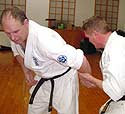
The strategy here is not to fight the movement, but to follow it and use the opponent's energy and power for your own escape. If done correctly the movement is so effective that your attacker won't know what happened. You will be there one moment (attack initiation) and them suddenly seem to disappear.
If you are an aikidoka (one who practices aikido) this technique will seem familiar. This response is practiced in my aikido organization Wadokai Aikido founded by Roy Suenaka Sensei. Similar techniques are also taught in many jujutsu and grappling arts.
Here the attacker has brought an arm around your head and pulls in and down. Go with the motion. As you do, and before the attacker's arms are securely closed, shove the fingers of both your hands (palm down) between your own neck and his arm and wrap them around the attacker's left forearm.
As your head moves down (going with the motion), roll the attacker's forearm outward as you also pull it down and away from your neck (using your own weight and not just arm strength). This will create a little space for your head to slip free.
As you do this, circle the top of your head toward the attacker's ribs, with your body circling away too — only a slight change in the direction the attacker was pulling you. You will find yourself outside the grip, to the side of the attacker and with the attacker's forearm in your control.


What you do at this point is up to you. One option is shown above. With the opponent's left forearm pulled back and down, it is simple to insert your own right arm under the attacker's forearm. Extend your right arm up along the attacker's back, your palm up.
You are trying to bend the opponent's arm up along his back (often called a "Chicken Wing"). To do so you should circle around behind the opponent. If you stay at the opponent's side, his arm is difficult to bend at the elbow and you will find yourself in a muscle against muscle situation. But if you move behind, the opponent's elbow will easily bend making the technique effective.
From here you can easily spin the opponent to the ground (not shown). Or, as shown here, your left arm is used against the opponent's head, pushing the face to the right (in a combat situation the flat of the hand is first used as a strike) — a very uncomfortable position and one which allows you have assume control over him. In another variation, the left hand grabs under the opponent's neck to secure the collar of his uniform (gi) and then pulls toward you to effect a choke (not shown).

About the Author Christopher Caile

Screenshot
Christopher Caile is the Founder and Editor-In-Chief of FightingArts.com. He has been a student of the martial arts for over 65 years.
He first started in judo while in college. Then he added karate as a student of Phil Koeppel in 1959 studying Kempo and Wado-Ryu karate. He later added Shotokan Karate where he was promoted to brown belt and taught beginner classes. In 1960 while living in Finland, Caile introduced karate to that country and placed fourth in that nation's first national judo tournament.
Wanting to further his karate studies, Caile then hitch hiked from Finland to Japan traveling through Scandinavia, Europe, North Africa, the Middle East and South and Southeast Asia — living on 25 cents a day and often sleeping outside.
Arriving in Japan (1962), Caile was introduced to Mas Oyama and his fledgling full contact Kyokushinkai Karate by Donn Draeger, the famous martial artist and historian. Donn also housed him with several other senior international judo practitioners. Donn became Caile's martial arts mentor, coaching him in judo and introducing him to Shinto Muso-ryu under Takaji Shimizu.
Caile studied at Oyama's honbu dojo and also at Kenji Kurosaki's second Tokyo Kyokushinkai dojo. In his first day in class Oyama asked Caile to teach English to his chief instructor, Tadashi Nakamura. They have been friends ever since. Caile also participated in Oyama's masterwork book, "This Is Karate."
Caile left Japan with his black belt and designation as Branch Chief, the first in the US to have had extensive training in Japan directly under Oyama Sensei. As such, Oyama Sensei asked him to be his representative on visits to his US dojos to report on their status.
A little over a year later, Nakamura, Kusosaki and Akio Fujihira won an epic David vs. Goliath challenge match against Thailand's professional Muay Thai Boxers in Bangkok, Thailand, thrusting Kyolushinkai and Nakamura into national prominence.
Back in the US Caile taught Kyokushinkai karate in Peoria, Il while in college and later in Washington, DC. while in graduate school. Durimg this time Shihan Nakamura had moved to New York City to head Kyokushinkai's North American Operation.
In 1976 when Kaicho Tadashi Nakamura formed the World Seido Karate organization, Caile followed. Living then in Buffalo, NY, Caile taught Seido karate and self-defense at the State University of New York at Buffalo (SUNY Buffalo) for over 15 years where he also frequently lectured on martial arts and Zen in courses on Japanese culture.
Caile moved to New York City in 1999 to marry Jackie Veit. He is now an 8th degree black belt, Hanshi, training in Seido Karate's Westchester, NY Johshin Honzan (Spiritual Center) dojo. In Seido Caile is known for his teaching of and seminars on kata applications. He also produced a 14 segment video series on Pinan kata Bunkai currently available to Seido members.
Caile is also a long-time student and Shihan in Aikido. He studied in Buffalo, under Mike Hawley Shihan, and then under Wadokai Aikido's founder, the late Roy Suenaka (uchi deshi under Morihei Ueshiba, founder of Aikido and was Shihan under Tohei Sensei). In karate, Suenaka (8thdan) was also an in-house student of the Okinawan karate master Hohan Soken.
Having moved to New York City, Caile in 2000 founded this martial arts educational website, FightingArts.com. Twenty-five years later, in 2025, it underwent a major update and revision.
For FightingArts.com and other publications Caile wrote hundreds of articles on karate, martial arts, Japanese art, Chinese Medicine and edited a book on Zen. He also developed relationships with a cross section of leading martial arts teachers. Over the last four decades he has conducted extensive private research into karate and martial arts including private translations of the once secret Okinawan hand copied and passed on Kung Fu book, the Bubishi, as well as an early karate book by the karate master Kenwa Mabuni. He periodically returns to Japan and Okinawa to continue his studies and participate Seido karate events. In Tokyo he practiced (with Roy Suenaka Sensei) in a variety of aikido organizations with their founders – including private interviews and practices at the Aiki-kai Aikido Honbu dojo with the son and grandson of aikido's founder, Doshu (headmaster) Kisshomaru (an old uchi-deshi friend) and his son, Moriteru Ueshiba and in Iwama with Morihiro Saito. On Okinawa he studied Goju Ryu karate under Eiichi Miyazato, 10th dan founder of Naha's Jundokan, and also with Yoshitaka Taira (who later formed his own organization, who specialized in kata Bunkai. While there Caile also trained with Hohan Soken's senior student, Master Fusei Kise, 10 dan as well as with the grandson of the legendary karate master Anko Itosu.
Caile's other martial arts experience includes: Diato-ryu Aikijujitsu and Kenjitsu, kobudo, boxing, Muay Thai, MMA, Kali (empty hand, knife and bolo), study of old Okinawan Shoran-ryu & Tomari body mechanics, study of old Okinawan kata under Richard Kim, study of close quarter defense and combat, including knife and gun defenses, Kyusho Jitsu and several Chinese fighting arts including 8 Star Praying Mantis, Pak Mei (White Eyebrow), and a private family system of Kung Fu.
Caile is also a student of Zen as well as a long-term student of one branch of Traditional Chinese Medicine, Chi Kung (Qigong). As one of two senior disciples of Chi Kung master Dr. Shen (M.D., Ph.D.) Caile was certified to teach and practice. This led to Caile's founding of the The Chi Kung Healing Institute on Grand Island, NY. In Western NY, he also frequently held Chi Kung seminars, including at SUNY Buffalo and at the famous Chautauqua Institution in Chautauqua, NY. His articles on Chi Kung also appeared in the Holistic Health Journal and in several books on alternative medicine.
Caile holds a BA in International Studies from Bradley University and MA in International Relations with a specialty in South and Southeast Asia from American University in Washington, D.C. While in Buffalo, NY he also studied digital and analog electronics.
In his professional life Caile also worked in public relations and as a newspaper reporter and photographer. Earlier he worked in the field of telecommunications including Managing a Buffalo, NY sales and service branch for ITT. He then founded his own private telephone company. This was followed by creation of an electrical engineering company that designed and patented his concept for a new type of low-cost small business telephone system (which was eventually sold to Bell South). The company also did contract work for Kodak and the US space program. Simultaneously Caile designed and manufactured a unique break-apart portable pontoon boat.
Most recently Caile co-founded an internet software company. Its products include software suites with AI capability for control and management of streaming media, such as video and music, an all-in-one book publishing software product for hardcover, eBook and audio book creation and security software for buildings and government use.
For more details about Christopher Caile's martial arts, work experience and life profile, see the About section in the footer of this site.
Search for more articles by this author:
